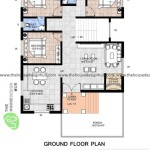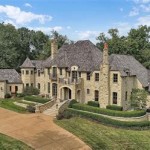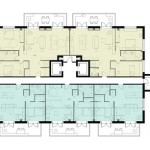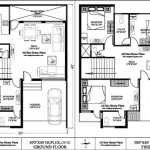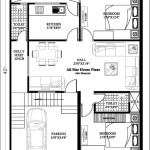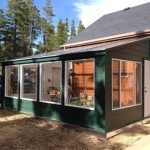```html
Original Victorian Home Plans: A Glimpse into Architectural History
The Victorian era, spanning from approximately 1837 to 1901, witnessed a period of profound social, technological, and architectural transformation. Original Victorian home plans offer a valuable window into the aesthetic sensibilities, construction techniques, and lifestyle considerations of this bygone era. These plans are not merely blueprints; they are historical documents that reveal much about the social strata, technological advancements, and cultural values that shaped Victorian society.
Understanding original Victorian home plans requires a nuanced approach, considering the diverse architectural styles that flourished during the period. Queen Anne, Italianate, Gothic Revival, and Romanesque Revival homes, among others, each possessed distinctive features reflecting specific historical influences and regional variations. Recognizing these stylistic nuances is crucial for accurate interpretation and appreciation of original plans.
The survival of original Victorian home plans is often attributed to the meticulous record-keeping practiced by architects, builders, and homeowners of the time. Many plans were meticulously drafted on linen or vellum, offering durability and preserving intricate details. These plans were not only used for construction purposes but also served as legal documents, establishing property boundaries and defining architectural features.
Key Features and Characteristics of Victorian Home Plans
Victorian home plans are characterized by a number of distinctive features that reflect the era's emphasis on ornamentation, functionality, and social hierarchy. These aspects are often readily apparent when scrutinizing original plans.
One defining feature is the emphasis on intricate ornamentation. Victorian homes were renowned for their elaborate detailing, including decorative moldings, ornate cornices, intricate window designs, and elaborate porch embellishments. Original plans meticulously depict these details, providing invaluable insight into the craftsmanship and artistry that characterized Victorian architecture. Such details are not merely aesthetic additions, but are integral to the overall design and structural integrity of the building. The plans often specify the exact dimensions and materials to be used in creating these ornamental elements, ensuring that the finished product matched the architect's vision.
Floor plans generally reflected social hierarchies and domestic organization. The placement of rooms, the size of each space, and the flow of circulation all contributed to establishing and reinforcing social distinctions within the household. Formal parlors and dining rooms were designed for receiving guests and showcasing wealth and status. Servants' quarters, often located in the back of the house or on upper floors, were clearly separated from the main living areas, reflecting the social divide between the owners and their staff. Original plans often include detailed notations indicating the intended use of each room, further illuminating the social dynamics of the Victorian household.
Another essential aspect of Victorian home plans is their emphasis on natural light and ventilation. Large windows were strategically placed to maximize sunlight penetration, and high ceilings facilitated air circulation. Plans commonly indicate the orientation of the house in relation to the sun, ensuring that the interior spaces were well-lit and comfortable throughout the day. The inclusion of features such as bay windows and oriels further enhanced natural light and provided occupants with panoramic views of the surrounding landscape. Ventilation was also a key consideration, with plans often incorporating features such as transoms above doors and strategically placed windows to promote cross-ventilation.
Materials and Construction Techniques Depicted in Victorian Plans
Original Victorian home plans offer valuable information about the materials and construction techniques employed during the era. These details provide insight into the technological capabilities and building practices of the time.
Typically, Victorian homes were constructed using durable and readily available materials such as wood, brick, and stone. Original plans often specify the type and quality of these materials, ensuring that the buildings were structurally sound and aesthetically pleasing. Wood was commonly used for framing, siding, and interior trim, with hardwoods such as oak and maple being favored for flooring and cabinetry. Brick and stone were used for foundations, exterior walls, and decorative elements, providing durability and fire resistance. Plans often include detailed specifications for the dimensions and arrangement of these materials, ensuring that the construction process adhered to specific standards.
The plans also reveal the use of innovative construction techniques, such as balloon framing and platform framing. Balloon framing, which was prevalent in the mid-19th century, involved using long, continuous studs that extended from the foundation to the roof. Platform framing, which gained prominence later in the Victorian era, involved constructing each floor as a separate platform, providing greater stability and ease of construction. Original plans often depict the details of these framing systems, indicating the size and spacing of the structural members. They also reveal the use of other advanced construction techniques, such as the use of cast iron columns and beams to support large spans and the incorporation of plumbing and heating systems into the building's design.
Furthermore, Victorian home plans often include detailed specifications for the finishing materials used in the interior and exterior of the house. These specifications encompass details such as the type of paint, wallpaper, and flooring to be used in each room, as well as the style of hardware and fixtures. Original plans provide a comprehensive guide to the selection and installation of these materials, ensuring that the finished product met the architect's vision and the homeowner's expectations.
Interpreting and Utilizing Original Victorian Home Plans Today
Original Victorian home plans are not only valuable historical artifacts but also practical resources for homeowners, architects, and historians today. They can be used for a variety of purposes, ranging from restoration and renovation projects to historical research and architectural inspiration.
For homeowners seeking to restore or renovate a Victorian home, original plans provide invaluable guidance. They offer insights into the original layout, materials, and design details of the house, helping homeowners make informed decisions about their renovation projects. By studying the original plans, homeowners can ensure that their renovations are historically accurate and consistent with the original character of the house. In some cases, original plans may even reveal hidden features or architectural details that were previously unknown, adding to the historical significance of the building. Furthermore, original plans can be used as a reference for recreating missing or damaged architectural elements, such as decorative moldings, window trim, and porch details.
Architects and designers can use original Victorian home plans as a source of inspiration and guidance for designing new buildings or renovating existing ones. By studying the plans, they can gain a deeper understanding of Victorian architectural principles and design aesthetics. This knowledge can be applied to create new buildings that are sympathetic to the Victorian style or to renovate existing buildings in a way that preserves their historical character. Original plans can also be used as a reference for designing historically accurate additions and alterations to Victorian homes, ensuring that new construction blends seamlessly with the existing structure.
Historians and researchers can use original Victorian home plans as primary source documents for studying the social, economic, and cultural history of the Victorian era. These plans provide insights into the lifestyles of Victorian families, the social hierarchies of the time, and the technological advancements that shaped the era. By analyzing the layouts of Victorian homes, historians can gain a deeper understanding of how people lived, worked, and interacted with each other. Original plans can also be used to study the evolution of architectural styles and construction techniques over time, providing a valuable record of the changes that occurred during the Victorian era.
```
Vintage Victorian House Plans 1879 Print Plainfield George La Baw F Mansion Floor Plan

House Plans Victorian Vintage Sims

59 Best Victorian House Floor Plans Ideas Vintage

Untitled Victorian House Plans Mansion Floor Plan Homes

59 Best Victorian House Floor Plans Ideas Vintage

Victorian House Plans Monster
Victorian House Plans Home Design Gml D 756 19255

House Plan Maravella Sater Design Collection

A Queen Anne Victorian Designed In 1885 But Built 2002
Victorian House Plans Home Design Gml D 756 19255

